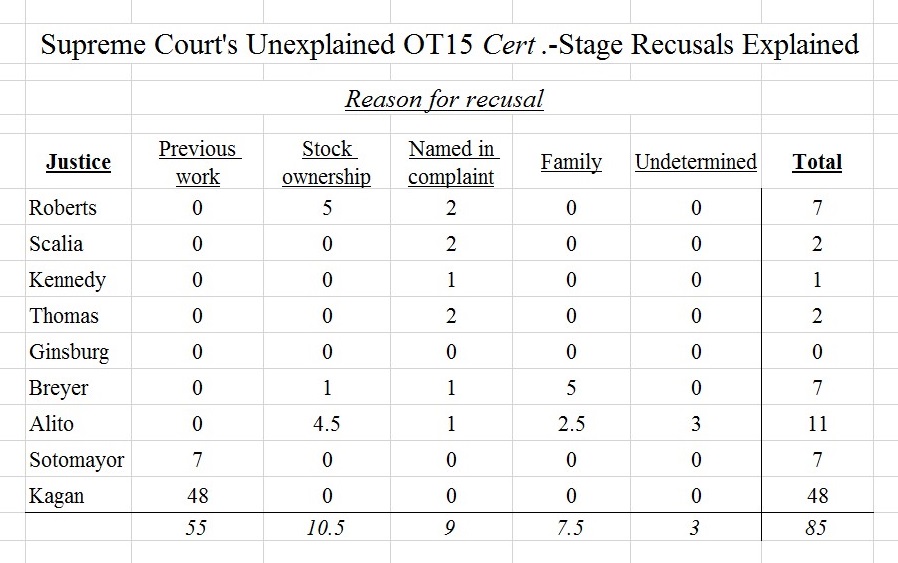Fix the Court Finds Chief Justice Roberts Missed a Stock Conflict
Chief Justice should have recused himself from an environmental cleanup case in October

While researching the reasons why Supreme Court justices recused themselves from cert. determinations 85 cases times this term, Fix the Court found that Chief Justice John Roberts overlooked a stock conflict when he and his colleagues were deciding whether to hear a Superfund cleanup case in October.
According to his most recent financial disclosure report, Roberts owns between $100,001 and $250,000 in Texas Instruments stock, and the company is named in that lawsuit. This revelation is reminiscent of a similar episode this term in which Justice Alito sat out an energy case, FERC v. EPSA, but Justice Stephen Breyer did not, though the two justices at the time were both invested in a litigant, Johnson Controls.
“Chief Justice Roberts’ oversight, as well as Justice Breyer’s similar mistake, demonstrate that the Supreme Court’s current system of self-checking for conflicts isn’t working,” said Gabe Roth, executive director of Fix the Court who uncovered the Roberts error. “The institution is in dire need of policy changes on recusals and stock ownership – such as the creation of blind trusts for the justices – that would ensure these oversights do not continue to happen and that our most antiquated government body starts to comport with modern expectations of transparency.”
**See the reasons for recusal here**
The justices’ current practice regarding conflicts of interest is not to disclose a reason for recusal. Instead, the weekly orders list noting recusals simply states that a justice “took no part” in consideration of a petition.
Fix the Court found that, so far this term, the most frequent reason for recusal was that Justice Elena Kagan (48 recusals) or Justice Sonia Sotomayor (7 recusals) had previously acted in the case in question. Sotomayor was a federal judge in New York, and Kagan, the U.S. solicitor general, before their respective nominations.
The remaining 30 recusals were divided among six other justices, with Justice Ruth Bader Ginsburg the only justice not to step aside in any case. Among them, the most common reason was a justice’s stock ownership (10.5 recusals), followed by being named in a complaint (9 recusals) and a family connection to a petition (7.5 recusals). Finally, we could not determine the reasons behind three additional Alito recusals. (A half of a recusal means that a justice had two reasons to recuse from a single cert. determination.)
Here’s our analysis of the reasons why 85 times between October and December a Supreme Court justice “took no part” in a cert. determination.
And here’s the list of all 85 recusals as they were described in the court’s weekly orders lists during the time.
And here’s that list as an easy-to-reference chart.
“Trust us” isn’t working
In March, Fix the Court asked two justices via congressional intermediaries (see this link, at 49:19) why they do not publicize their motives behind a recusal. Justice Anthony Kennedy said that if a reason is publicly stated – say it’s due to a family member’s participation as counsel – that would indicate to the other justices that the case is of great importance to a colleague and could theoretically sway the outcome. “It’s almost like lobbying,” Kennedy said.
Justice Breyer, sitting next to him at the time, added resentfully, “I don’t want to have to give my [reasons for recusal] if I don’t want to.”
“This ‘trust us’ theme emanating from the Supreme Court is one whose time has come and gone,” Roth added. “With record low trust levels in government nowadays, the court should endeavor to reverse the trend by becoming more open than ever before. Until it does, Fix the Court will be here to fill in the gaps and push the court to be more accountable to a 21st century democracy.”